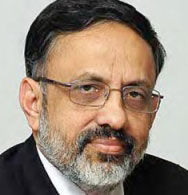  Commonwealth ICT ministers meeting in London this week have adopted a set of common principles to guide national policy development on cybergovernance.
At the start of a 2-day conference to launch the model, Hon. Philip Paulwell, Jamaican minister of science, technology, energy and mining, presented the key principles of the common model as follows:
• Contributing to a safe and effective cyberspace;
• Supporting broader economic and social development;
• Acting individually and collectively to tackle cybercrime; and
• Exercising rights and meeting responsibilities in cyberspace.
These principles are intended to guide Commonwealth members to plan and implement practical actions in policy development, regulation and legislation, cross-border collaboration, capacity building, technical measures and other operational activities, a spokesperson for the Commonwealth Telecommunications Organisation explained.
“As sovereign countries, the Commonwealth countries will pursue individual strategies, while embracing the need for greater standardisation, considering that cyberspace is a global facility and we have to enable interoperability,” Paulwell said.
Ministers recognized that while principles are important, there is an urgent need to address how these principles will be implemented.

Hon. Joel Kaapanda, Namibia’s minister of information and communication technology highlighted the need for preventive and protective mechanisms to assure the trust of the public. The e-gov, e-commerce and e-signature bill being crafted in Namibia provides for the establishment of an interception centre to assure security of the country. However, this had triggered public debate questioningthe need for such a bill. At the same time, he felt that interception may sometimes be needed to protect the national infrastructure, the security of the economy and political stability. Thus security and individual privacy should be delicately balanced.
Though priorities differed from country to country, there were some key metrics to measure progress in cybergovernance . Jamie Saunders, director for international cyberpolicy in the Foreign and Commonwealth Office identified three: investment in e-commerce, successful investigations into cybercrime and the development of a dynamic content generation community.
Tim Crossland, head of cyberprevention and information law in the Serious Organised Crime Agency and chair of the Commonwealth Cybercrime Initiative, warned of the danger of “naivete” in imposing a template of simplistic solutions to prevent cybercrime. He felt there were some features of the Internet such anonymity and its cross border nature favoured criminality, but they also support political dissidents who otherwise may not be able to express themselves.
Crossland also pointed out that while the UK was well-resourced, very often, even here, alternatives to criminal justice system were sought, as some of the criminals were outside the jurisdiction. Where:
Countries have fundamental challenges within their criminal justice system, where even basic crime is difficult to prosecute, putting all the emphasis on investigating and prosecuting the most sophisticated and complex type of crime, may not be the best strategy for every country, he argued. What might work is working with service providers to remove criminal content.

India’s Department of Electronics and Information Technology, represented by Additional Secretary Rajiv Gauba, welcomed the agreed model, as one building on the common values and aspirations expressed in the Commonwealth charter, including parliamentary democracy, sustainable development, human rights and the rule of law. |